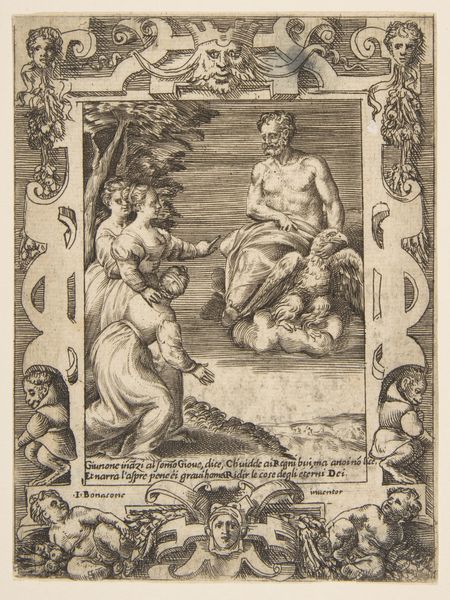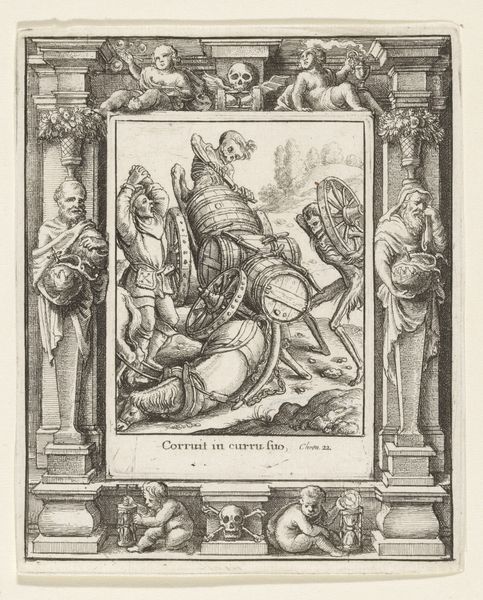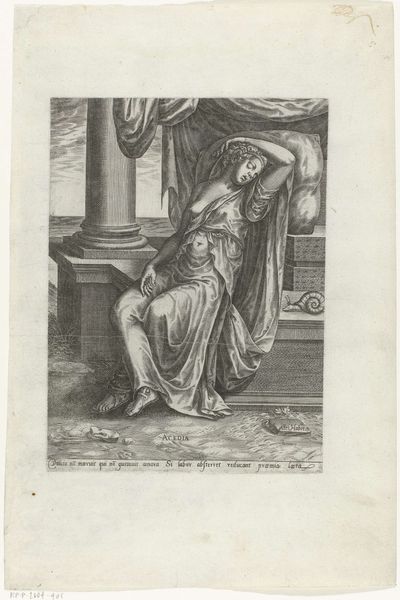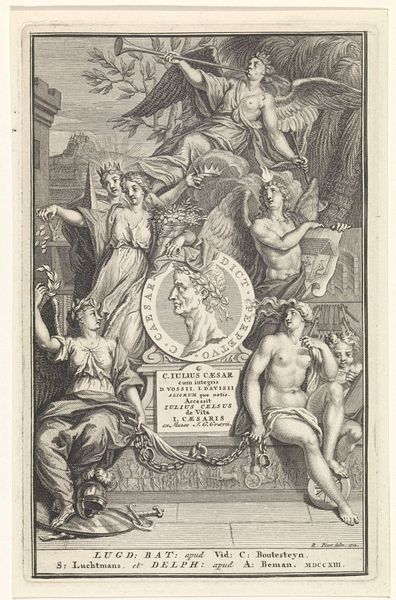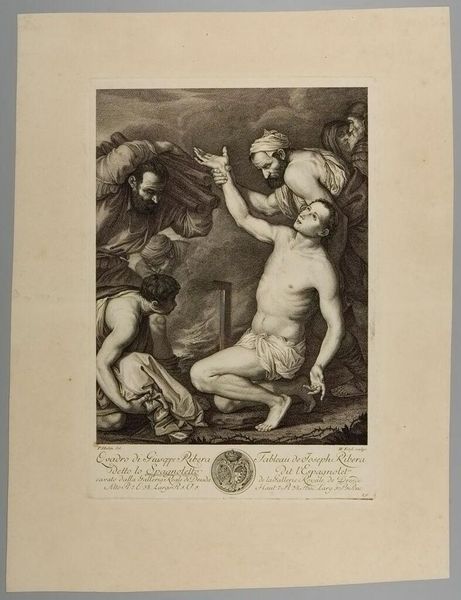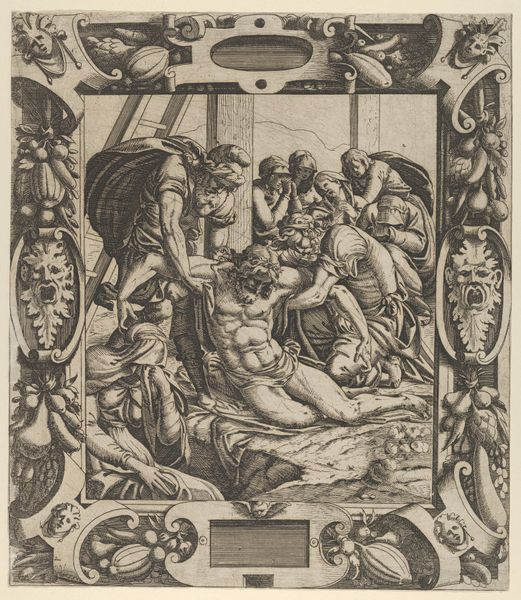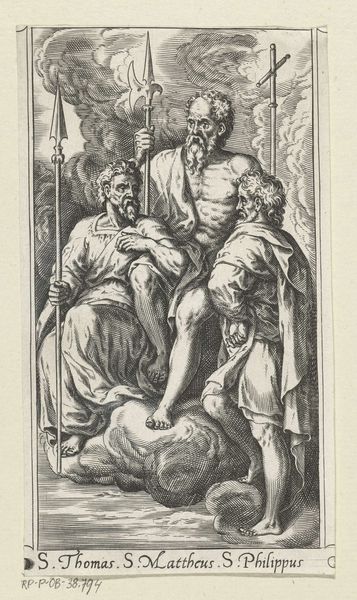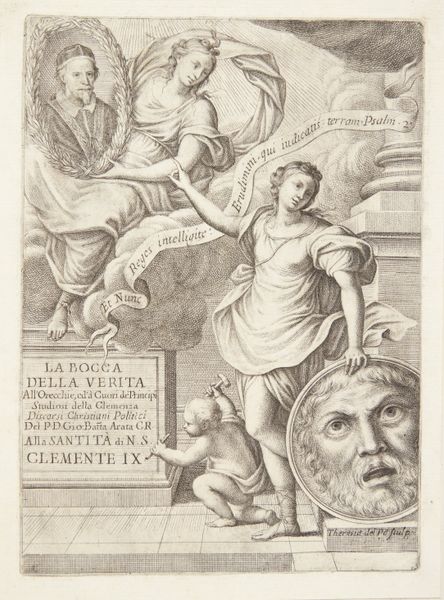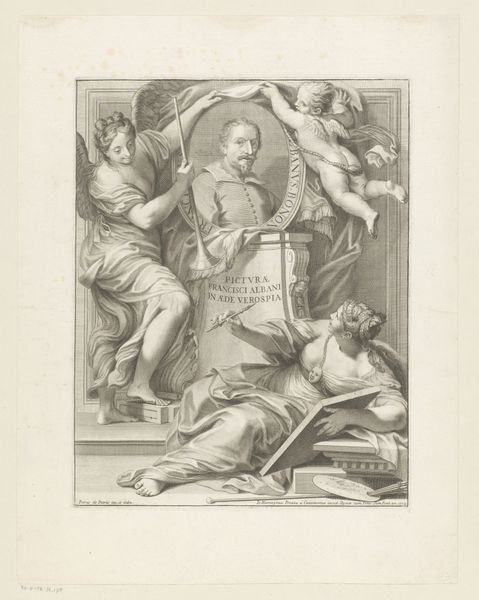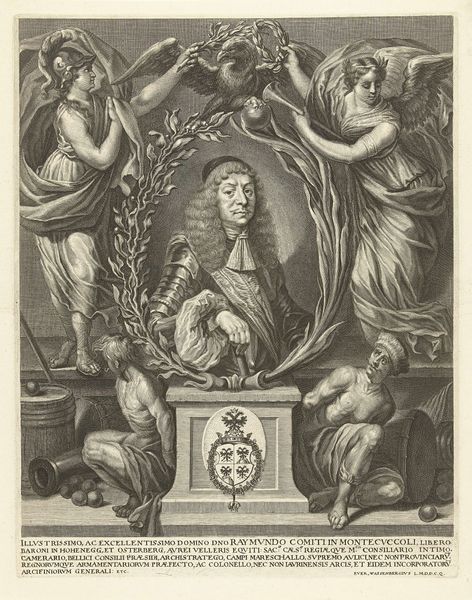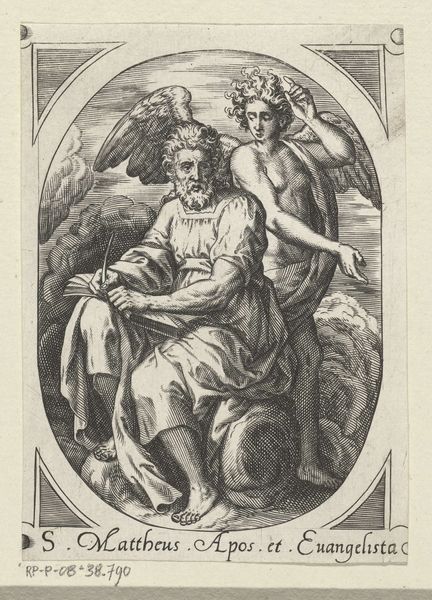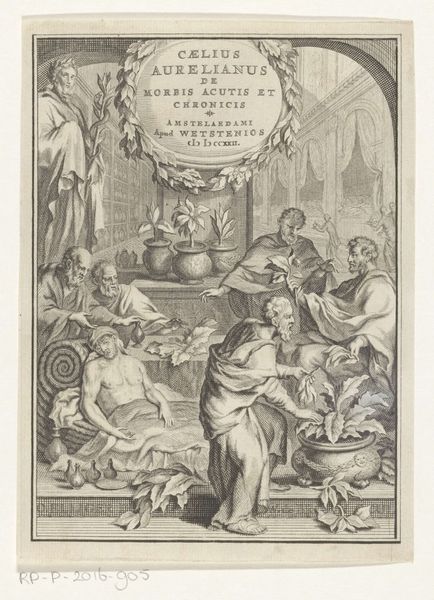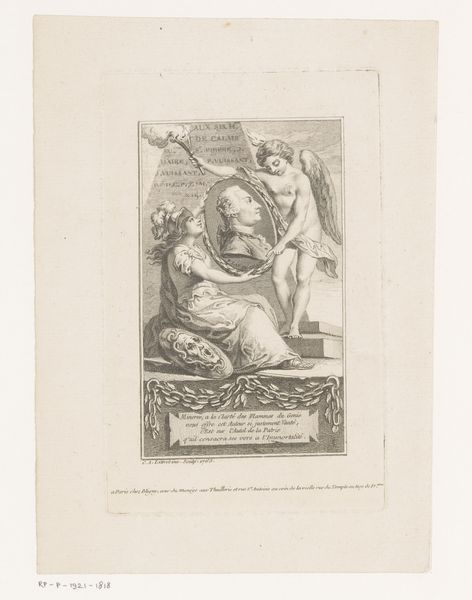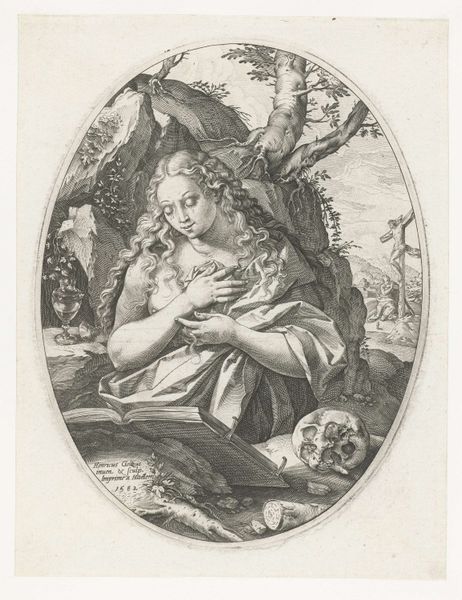
print, engraving
#
portrait
#
baroque
# print
#
figuration
#
line
#
history-painting
#
engraving
Dimensions: height 480 mm, width 277 mm
Copyright: Rijks Museum: Open Domain
Curator: This is "Profeet Jesaja," or Prophet Isaiah, an 18th-century engraving by Giuseppe Cereda. The print portrays the prophet with a scroll, flanked by two cherubic figures. Editor: Oh, he looks intense. All that baroque drama packed into monochrome—it’s quite something! He looks like he's about to drop some serious truth bombs. I mean, those angels seem equally impressed and a little scared, don't you think? Curator: The intensity you perceive is fitting. Isaiah was a pivotal figure in the prophetic tradition, whose pronouncements often carried warnings and calls for societal reform. Cereda likely drew inspiration from Renaissance interpretations of prophets, emphasizing gravitas and divine inspiration. The Baroque style amplified this effect, imbuing the print with emotion. Editor: Right! That weighty seriousness. It’s interesting how even the drapery feels significant, like every fold tells a story of struggle and revelation. It feels weighty, not just as art, but in what it represents, you know? Plus, that Hebrew text… It lends such mystery. Curator: Absolutely. The text enhances the historical and religious context, placing Isaiah within his cultural milieu. Note, also, how the angels serve as framing devices and contribute to the sense of divine presence. Prints like these served various functions – devotional, educational, and as declarations of patronage and affiliation. They allow us to explore the role religious imagery played in the shaping of political and religious discourse. Editor: I can totally see that. He almost embodies that collision between earthly power and spiritual might... He’s powerful but pensive, kind of troubled too, I think. He looks like he could stare down kingdoms! Curator: Yes, his strength seems undeniable. Examining such pieces offers a glimpse into the historical dialogues surrounding power, piety, and visual representation. They showcase the evolving nature of religious imagery and the crucial role of prints in making art accessible. Editor: You are so right. Looking at this makes me think, it's all about giving form to these feelings, giving shape to the story—and maybe it gets reinvented each time we look. Thank you for this enlightening tour. Curator: A worthwhile reflection indeed. The ability of art to engage with these narratives in multiple and surprising ways reveals so much of the historical world around us.
Comments
No comments
Be the first to comment and join the conversation on the ultimate creative platform.
